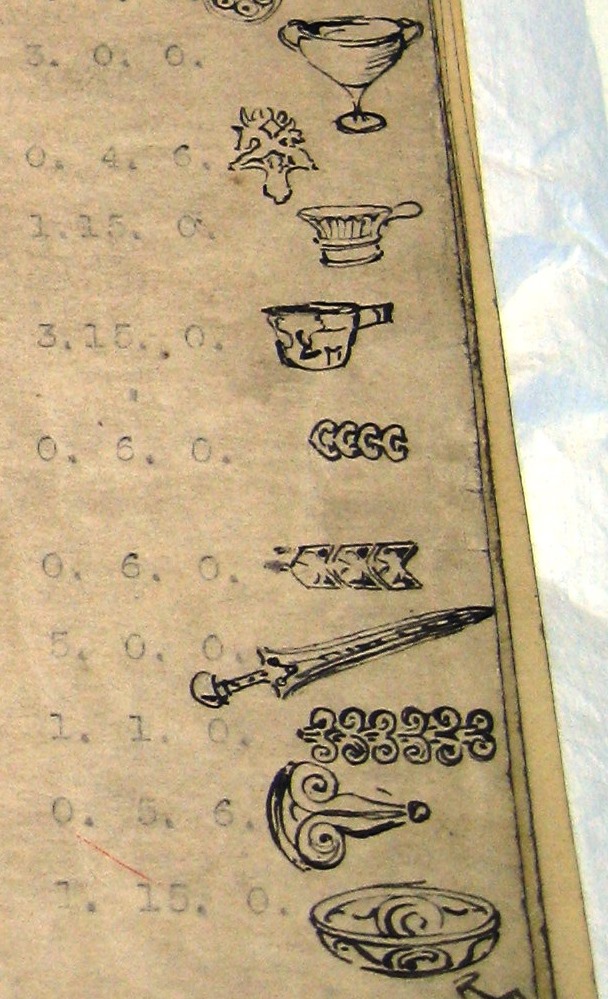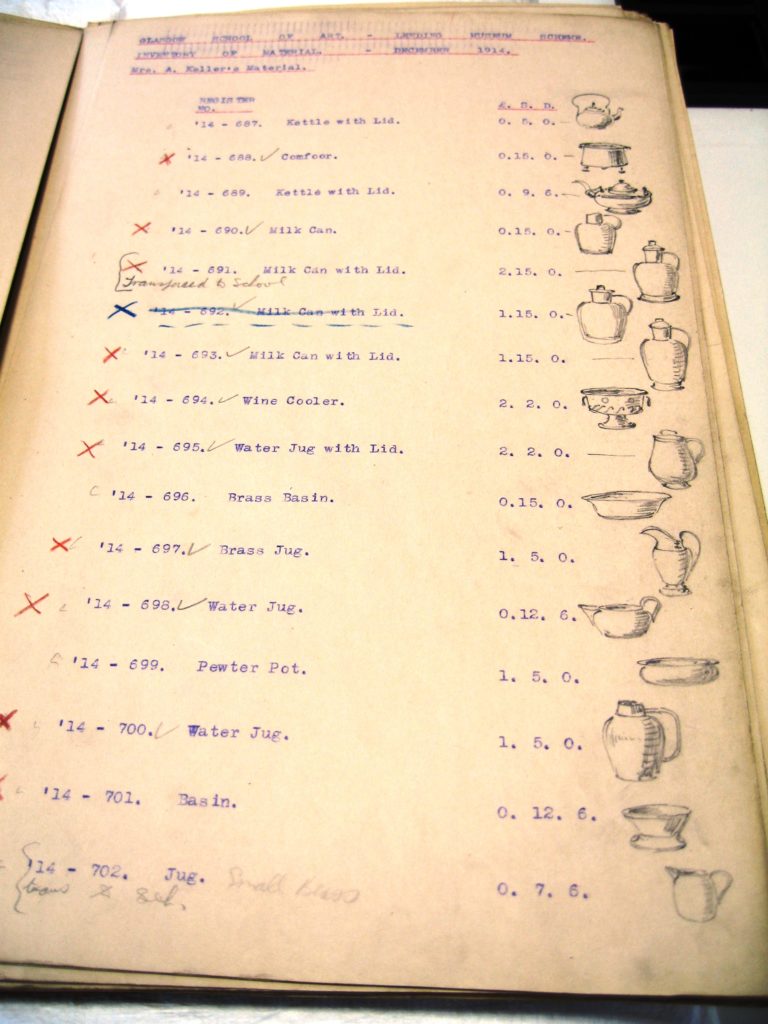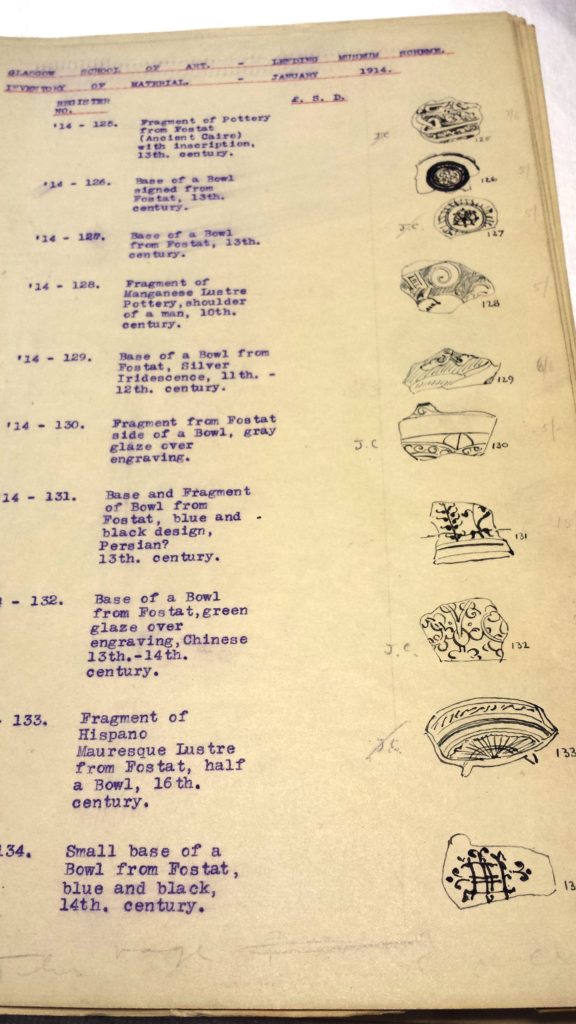
I am currently working in The Glasgow School of Art’s Archives and Collections as part of a work placement through my MLitt programme, Technical Art History, at the University of Glasgow. My main project is to research and catalogue the School’s collection of teaching aids from the early years of The Glasgow School of Art. Teaching aids used for students in the classroom at the end of the 19th and early 20th centuries included a wide variety of objects such as plaster casts, photographs, prints, ceramics, manuscript fragments, and various other objects.
In order to learn more about the objects and their history within the collection, I have been looking through archival materials like inventories and catalogues that list the teaching aids held at certain points in the School’s history. These have proven to be very helpful in identifying objects that still exist in the collection. I have been able to understand when some of these objects came into the collection, who brought them in, and how they were intended to be used. It has, however, been a long and involved task of looking through many inventories from the school’s early history, often not finding any connections to our current collection of objects. Many inventories list objects without sufficient (if any) detail, leaving me guessing if the description matches an object that still exists in our collection.

On one occasion, I made an exciting discovery. I found a unique inventory from 1914 which included a thoughtful detail not present in the other lists. Instead of simply listing the objects bought by the school, often with limited information, the person compiling this list included delicate and very detailed ink and pencil sketches for each object in the margins. This anonymous artist drew a variety of objects in the inventory list including architectural fragments, vases, coins, furniture, sculpture, and decorative pottery fragments. These descriptive additions to the inventory make a world of difference when attempting to match an object to a name in a list.

While being helpful to a researcher like me, they are also in many cases quite beautiful. The person creating these small drawings was clearly a skilled artist, able to capture many details of an object in a very small space. They are like works of art in themselves, something to be appreciated on their own and not only in the practical context of an inventory. I can’t help but wonder how much time this person put into these delicate drawings, and whether they have been appreciated by anyone until now or simply hidden away for the past hundred years waiting to be uncovered.
Post by Emma Cameron, student placement, MLitt Technical Art History, The University of Glasgow

